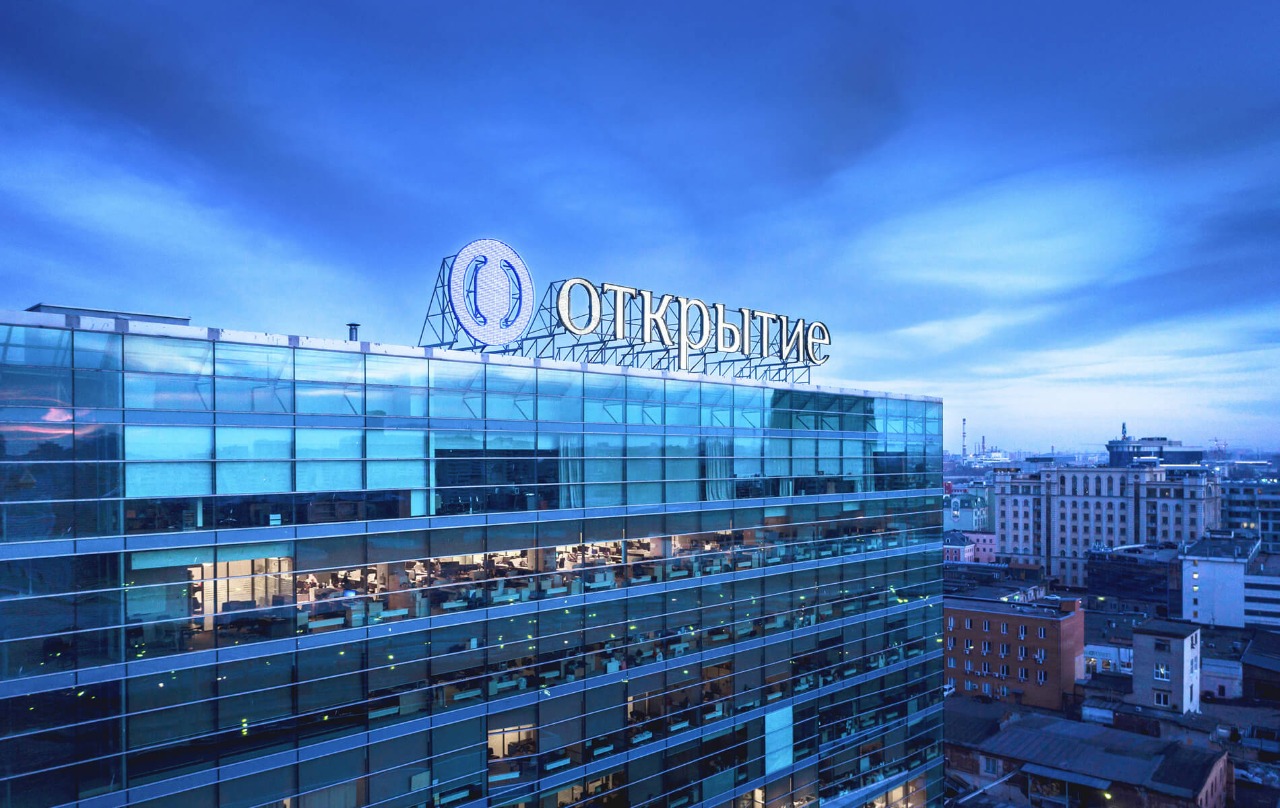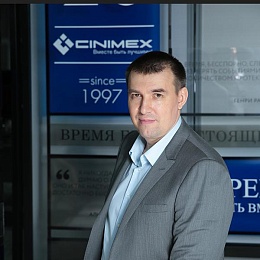A Comprehensive Picture of UFE

Growing market competition and the general situation of the economy are pushing financial institutions towards reducing the cost of each transaction and speeding up the launch of new banking products into the market. These tasks can be achieved with retail front-office automation systems, and that is why banks are showing increasingly more interest in such products.
Sergey Korsun, Division Director of the IT Development Department at Otkritie Bank, and Pavel Myshev, Deputy Director of Key Accounts Management at Cinimex told us about what a modern unified front-end solution (UFE) is and how it can be useful for a bank.
- Why is there a need to implement unified front-office systems?
Pavel Myshev: It is not news to anyone that merging different systems in the IT landscape of a bank can solve many problems, such as fragmentation and excessive number of applications for data processing, or the need for the user to duplicate the same set of commands or actions while working with applications. However, we should not think of the front-office system simply as a single unified interface capable to unite systems different both in architecture and interface design. Its possibilities go way beyond that: based on the analysis of the data collected by a unified front-office system, we can significantly improve the quality of customer service in all areas, predict demand for certain services, and increase cross-sales.
What did the implementation of the omni-channel platform do for the bank?
Sergey Korsun: The concept of the omni-channel platform was devised at the earliest stage of UFE design. The main goal of the project was to provide a single interface for sales and customer service across the office channel and the contact center. The implemented solution allowed us to reduce the training time of our employees, simplify business processes and, as a result, increase customer service time, personalize communications and obtain valuable insights. All this eventually improves customer satisfaction with Otkritie Bank.
Historically, the bank used to employ over 20 systems enabling customer service, but none of the existing solutions allowed us to implement all the required scenarios. That is why the decision was made to develop a new unified system.
What did the stages of the project look like?
Sergey Korsun: The project was launched in mid-2018. By March 2019, using a Private Cloud infrastructure, the UFE team launched the platform part called Digital Platform – a pipeline of continuous on-demand change delivery, the technological core of the microservice layer underlying the UFE and further omni-channel solutions. The Digital platform is designed to run in Docker microservices under Kubernetes and is realized entirely on open source software. In May 2019, the UFE was launched in a pilot group of bank branches, with daily updates to the system.
What was Cinimex's role in the project?
Pavel Myshev: As part of this project, our specialists were tasked with developing services to improve the efficiency of customer service from bank employees. On our side, the projects team was focused on applied tasks: optimization of the front-end system and the development of services that help to track customer interaction chains or the history of transactions.
What were the criteria used by Otkritie Bank to choose a partner for UFE development?
Sergey Korsun: The competencies and expertise of all project participants were paramount to us. We needed to create and bring the system into operation in as short a time as possible.
At the start of the project, an in-house team of 35 people worked on it. Then the project team headcount was tripled both through internal resources and by engaging partner companies.
What we consider unique for the market is the fact that a project of such a scale was initially launched and delivered using Agile process methodology featuring advanced technologies such as microservices, containerization and Private Cloud. The solution architecture is based on the Kubernetes container orchestration system and on a flexible and scalable software, so the continuous (with a frequency of several times a day) and fully automated delivery of upgrades to the existing system significantly reduces costs and allows to significantly reduce Time-to-Market. Owing to these innovations, a relatively small team was able to do a huge amount of work in the shortest possible time and at minimum expense.
What tools did Cinimex use in this project?
Pavel Myshev: We used such progressive methodologies as DevOps, microservices and containerization. Through open-source solutions, we were able to integrate a maximum number of channels at minimum time and cost. When choosing a tool to build a unified front-office, information security requirements should be taken into account. Such solution should support cross-platform, be scalable, and have high productivity. It is important that all listed qualities be confirmed by cases of successful implementation. You should not forget that once the project is delivered, certain efforts would be needed for staff training and adaptation. Agile methodologies were particularly important for the implementation of UFE in Otkritie Bank.
How many users is the system designed for? What makes it scalable and fault-tolerant?
Sergey Korsun: Several thousand bank employees use customer service systems. In particular, these are solutions that allow cardholder to view transactions for a specific period, check plastic card fees, terms and conditions, view the history of transactions, access credit card or deposit account statements and track information about changes in their status.
The main technology stack of the implemented ecosystem assumes the ability to scale and deploy a large number of Linux containers, manage them and balance their load. This is especially relevant due to the scale and growth of the number of system users. Fault tolerance of the system is confirmed by load testing and monitoring at full project target load.
The created system implements standard authentication and authorization mechanisms with granular control of access to each operation of each service, including support for two-factor authorization of the operation in different ways. Platform-wide mechanisms for monitoring and metrics collection, automatic deployment of both applications and infrastructure software have been implemented. The IaaC (infrastructure as code) concept has been fully implemented. Therefore, the deployment of the environment, for example, for a new development team, is fully automated.
The platform enables integration of a new software version into any environment, including industrial, in a matter of several tens of seconds without service interruption. Load testing under full project load showed an average response time of 300 ms - for the system user it is almost instantaneous.
What channels of customer communication can be unified, and how convenient is it for users?
Pavel Myshev: A unified system for the bank's front-office employees can improve key business indicators related to sales and customer service. In this context, by ‘front-end’, I mean the main systems through which client information is fed into the bank. Our customer may sometimes have dozens of front-end applications, and dealing with them requires certain skills. Finding the necessary information, authentication in different systems, switching between them, matching data – these processes significantly reduce the speed and efficiency of the bank’s customer service. Unification of such processes, among other, involves the reduction of a number of repetitive actions on the user’s end. It also simplifies data entry into the system, regardless of their source, whether it is a contact center, mobile bank or a specialist in the branch.
Do you have plans to replicate the UFE throughout the bank's network?
Sergey Korsun: Last July, the pilot operation of the UFE began in a limited number of regional branches, as well as in the bank’s contact center. In September 2019, the solution was replicated across the entire network – about 600 branches.
There are no plans to scale the solution across the entire group yet. However, we are ready to share our experience in implementing such IT solutions with our colleagues from Otkritie Group.
What types of customers can benefit from a unified front-end solution?
Pavel Myshev: First of all, a unified front office makes client data accessible across all channels. This solution is suitable for large financial organizations that already have a certain application stack and an extensive IT landscape, seeking to improve their customer service rate and quality.
Can you tell us if you have further plans for the platform's evolution? What services will it provide in the future?
Sergey Korsun: The new platform enables us to address any tasks related to our retail business at a significantly reduced Time-to-Market.
We are already in the process of transferring our credit conveyor to the Digital Platform, we have implemented a service for premium client relations, and we are looking into the concept of a paperless office.
In your opinion, why do companies need UFE?
Pavel Myshev: Competition is growing; it is increasingly difficult for banks to maintain comprehensive and long-term customer loyalty and become a "bank for any occasion". Consumers are getting savvy, information about every bank’s products is publicly available, and there are online platforms where you can compare banking products. Every business aims to increase or expand the product matrix of each of their customer. This can be achieved, among other, through optimization of tools that provide a holistic approach to customer profiling and understanding their needs.
In November 2020, the joint project of Otkritie Bank and Cinimex to create a Unified Front-End Solution for Customer Service won the COMNEWS AWARDS 2020 in the category "Best Digital Platform Implementation in a Retail Bank." The leaders in digital economy market were selected based on such criteria as project scalability, innovativeness and impact.

